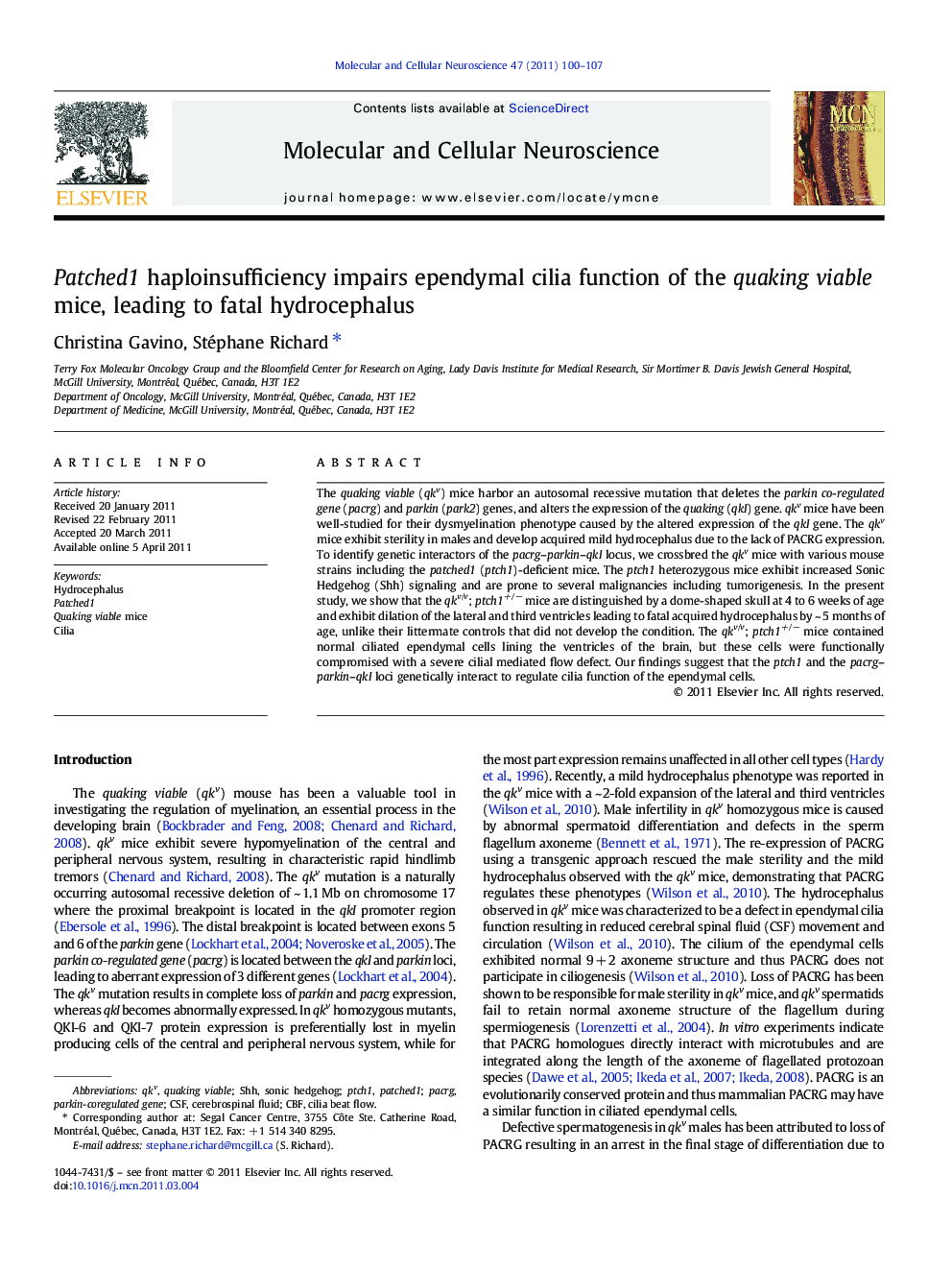| Article ID | Journal | Published Year | Pages | File Type |
|---|---|---|---|---|
| 10956669 | Molecular and Cellular Neuroscience | 2011 | 8 Pages |
Abstract
The quaking viable (qkv) mice harbor an autosomal recessive mutation that deletes the parkin co-regulated gene (pacrg) and parkin (park2) genes, and alters the expression of the quaking (qkI) gene. qkv mice have been well-studied for their dysmyelination phenotype caused by the altered expression of the qkI gene. The qkv mice exhibit sterility in males and develop acquired mild hydrocephalus due to the lack of PACRG expression. To identify genetic interactors of the pacrg-parkin-qkI locus, we crossbred the qkv mice with various mouse strains including the patched1 (ptch1)-deficient mice. The ptch1 heterozygous mice exhibit increased Sonic Hedgehog (Shh) signaling and are prone to several malignancies including tumorigenesis. In the present study, we show that the qkv/v; ptch1+/â mice are distinguished by a dome-shaped skull at 4 to 6Â weeks of age and exhibit dilation of the lateral and third ventricles leading to fatal acquired hydrocephalus by ~Â 5Â months of age, unlike their littermate controls that did not develop the condition. The qkv/v; ptch1+/â mice contained normal ciliated ependymal cells lining the ventricles of the brain, but these cells were functionally compromised with a severe cilial mediated flow defect. Our findings suggest that the ptch1 and the pacrg-parkin-qkI loci genetically interact to regulate cilia function of the ependymal cells.
Related Topics
Life Sciences
Biochemistry, Genetics and Molecular Biology
Cell Biology
Authors
Christina Gavino, Stéphane Richard,
